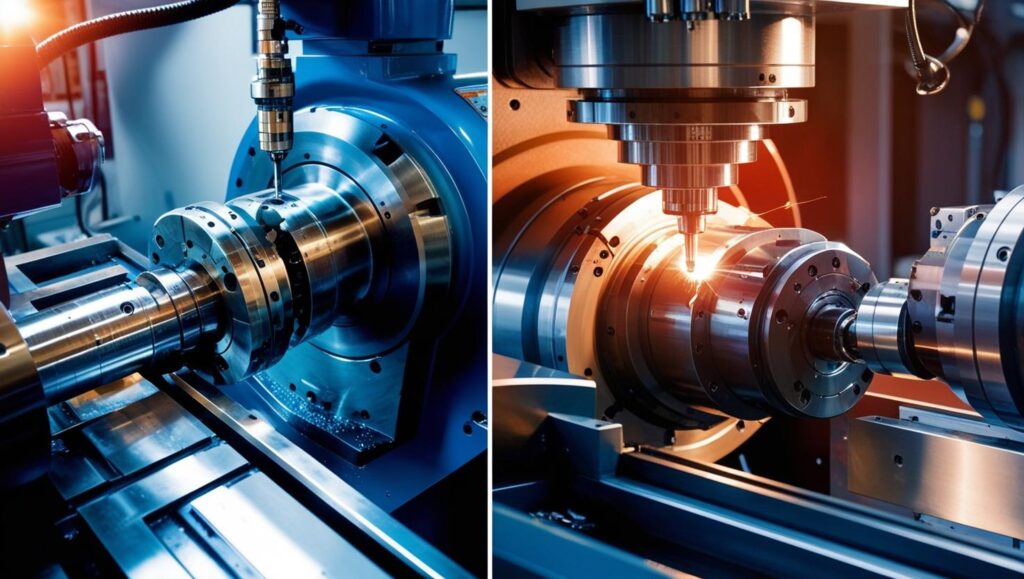When it comes to precision manufacturing and machining, CNC (Computer Numerical Control) machines are the industry standard. Two of the most commonly used types are CNC lathes and CNC milling machines. Both play vital roles in producing high-quality components, but they differ in function, application, and capabilities. If you’re wondering which is better — CNC lathe or CNC milling — this guide will help you make an informed decision.
Understanding CNC Machining
Before diving into the differences, it’s essential to understand CNC machining itself. CNC machines use computerised controls to manipulate machine tools, offering exceptional accuracy, consistency, and efficiency. These machines follow pre-programmed instructions to shape, cut, and finish materials like metal, plastic, and wood.
CNC machining is a subtractive manufacturing process, meaning it removes material from a solid block to create the desired shape. Now let’s explore the two primary types of CNC machines: CNC lathes and CNC milling machines.
Learn more about CNC Machining
What is a CNC Lathe?
A CNC lathe is designed for precision turning. In this process, the workpiece rotates while the cutting tool remains stationary. As the workpiece spins, the lathe cuts, drills, and shapes it into the desired form.
Key Features of CNC Lathes:
- Rotating Workpiece: The material spins on its axis.
- Stationary Cutting Tools: Tools remain in place while shaping the rotating material.
- Two-Axis Movement: Typically, the cutting occurs along the X and Z axes.
- Ideal for Cylindrical Parts: CNC lathes excel at creating symmetrical objects like shafts, bolts, and discs.
What is a CNC Milling Machine?
CNC milling machines operate quite differently. In this process, the cutting tools rotate while the workpiece remains stationary. The milling machine uses multiple axes of movement to create intricate shapes and detailed parts.
Key Features of CNC Milling Machines:
- Stationary Workpiece: The material remains fixed in place.
- Rotating Cutting Tools: The cutting tools move around the material.
- Multi-Axis Movement: Milling machines often operate on three to five axes.
- Ideal for Complex Shapes: CNC mills create flat surfaces, deep holes, grooves, and intricate parts.
Key Differences Between CNC Lathe and CNC Milling
| Feature | CNC Lathe | CNC Milling Machine |
| Workpiece Movement | Rotates on its axis | Remains stationary |
| Cutting Tool Movement | Stationary | Rotates and moves around the workpiece |
| Axes of Operation | Primarily X and Z axes | X, Y, and often Z axes (3 to 5 axes) |
| Best Suited For | Cylindrical and symmetrical parts | Complex, flat, and contoured parts |
| Examples of Products | Shafts, knobs, screws | Brackets, housings, custom components |
Advantages and Disadvantages
CNC Lathe Pros:
- High-Speed Production: CNC lathes are well-known for their ability to produce parts quickly due to the simplicity of their operation and the efficiency of their two-axis system.
- Excellent for Cylindrical and Symmetrical Parts: Lathes are optimised for creating perfectly round or symmetrical objects, making them ideal for producing shafts, pipes, and fittings.
- Cost-Effective for Simple Designs: CNC lathes generally have lower operational costs compared to milling machines and are highly efficient when producing straightforward shapes.
CNC Lathe Cons:
- Limited to Two Axes: The X and Z axis configuration restricts the complexity of parts that can be produced, making it less versatile for intricate designs.
- Not Ideal for Complex Geometries: While perfect for cylindrical parts, lathes struggle with parts that require multiple contours or highly detailed features.
CNC Milling Pros:
- Greater Versatility with Multiple Axes: Milling machines can operate on three to five axes, allowing them to produce highly complex shapes with precision.
- Capable of Producing Complex Shapes: From flat surfaces to detailed engravings, CNC mills handle a wide range of design requirements.
- High Precision and Detail: Advanced control systems allow CNC mills to create intricate parts with exceptional accuracy, crucial for industries like aerospace and medical devices.
CNC Milling Cons:
- Longer Setup Time: The multi-axis capability and need for precise calibration can increase preparation time before production starts.
- Typically More Expensive: Milling machines often cost more both in terms of initial investment and operational expenses, given their advanced capabilities and wider range of applications.
Which Machine Should You Choose?
Deciding between a CNC lathe and CNC milling machine depends on your project requirements.
- Choose a CNC Lathe if:
- You need cylindrical or conical parts
- Your designs require high-speed, high-volume production
- You prioritise cost-effectiveness for simpler shapes
- Choose a CNC Milling Machine if:
- You require intricate, multi-dimensional shapes
- Precision and detail are critical
- Your project involves flat surfaces, slots, and pockets
Conclusion
Both CNC lathes and CNC milling machines offer unique advantages in manufacturing. The right choice depends on your project’s complexity, design, and production needs. By understanding their differences and capabilities, you can select the best machine to optimise efficiency and quality.
Whether you choose a CNC lathe or CNC milling machine, investing in high-quality CNC equipment ensures precision, durability, and top-notch performance. Carefully assess your requirements and consult with industry experts if needed to make an informed decision.
If you’re looking for expert precision-engineered solutions, Aeron Automation is here to help. With over 40 years of experience, state-of-the-art CNC turning and milling technology, and a commitment to exceptional quality, we deliver results you can trust.
